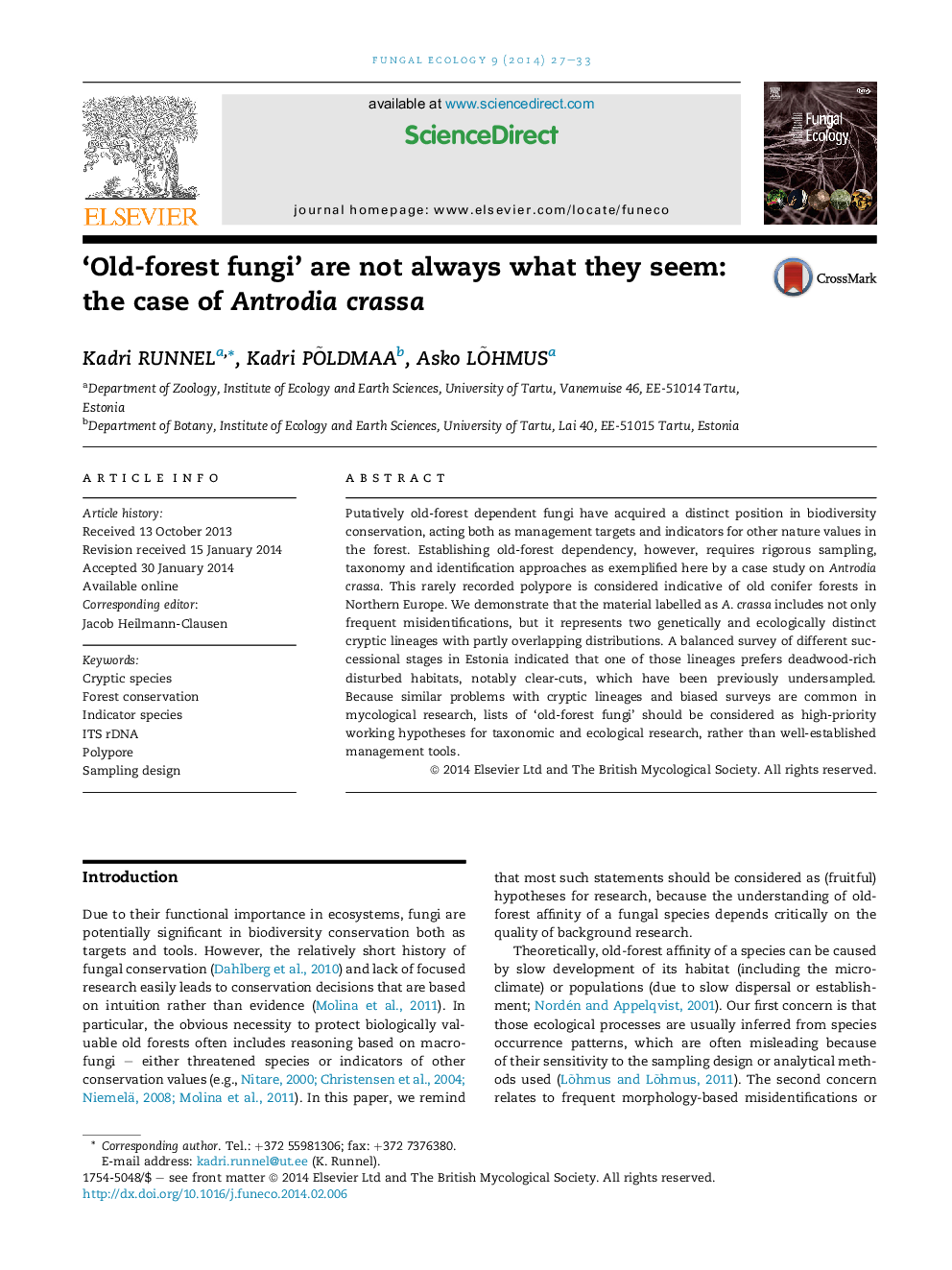| Article ID | Journal | Published Year | Pages | File Type |
|---|---|---|---|---|
| 8384682 | Fungal Ecology | 2014 | 7 Pages |
Abstract
Putatively old-forest dependent fungi have acquired a distinct position in biodiversity conservation, acting both as management targets and indicators for other nature values in the forest. Establishing old-forest dependency, however, requires rigorous sampling, taxonomy and identification approaches as exemplified here by a case study on Antrodia crassa. This rarely recorded polypore is considered indicative of old conifer forests in Northern Europe. We demonstrate that the material labelled as A. crassa includes not only frequent misidentifications, but it represents two genetically and ecologically distinct cryptic lineages with partly overlapping distributions. A balanced survey of different successional stages in Estonia indicated that one of those lineages prefers deadwood-rich disturbed habitats, notably clear-cuts, which have been previously undersampled. Because similar problems with cryptic lineages and biased surveys are common in mycological research, lists of 'old-forest fungi' should be considered as high-priority working hypotheses for taxonomic and ecological research, rather than well-established management tools.
Related Topics
Life Sciences
Agricultural and Biological Sciences
Ecology, Evolution, Behavior and Systematics
Authors
Kadri Runnel, Kadri Põldmaa, Asko Lõhmus,
